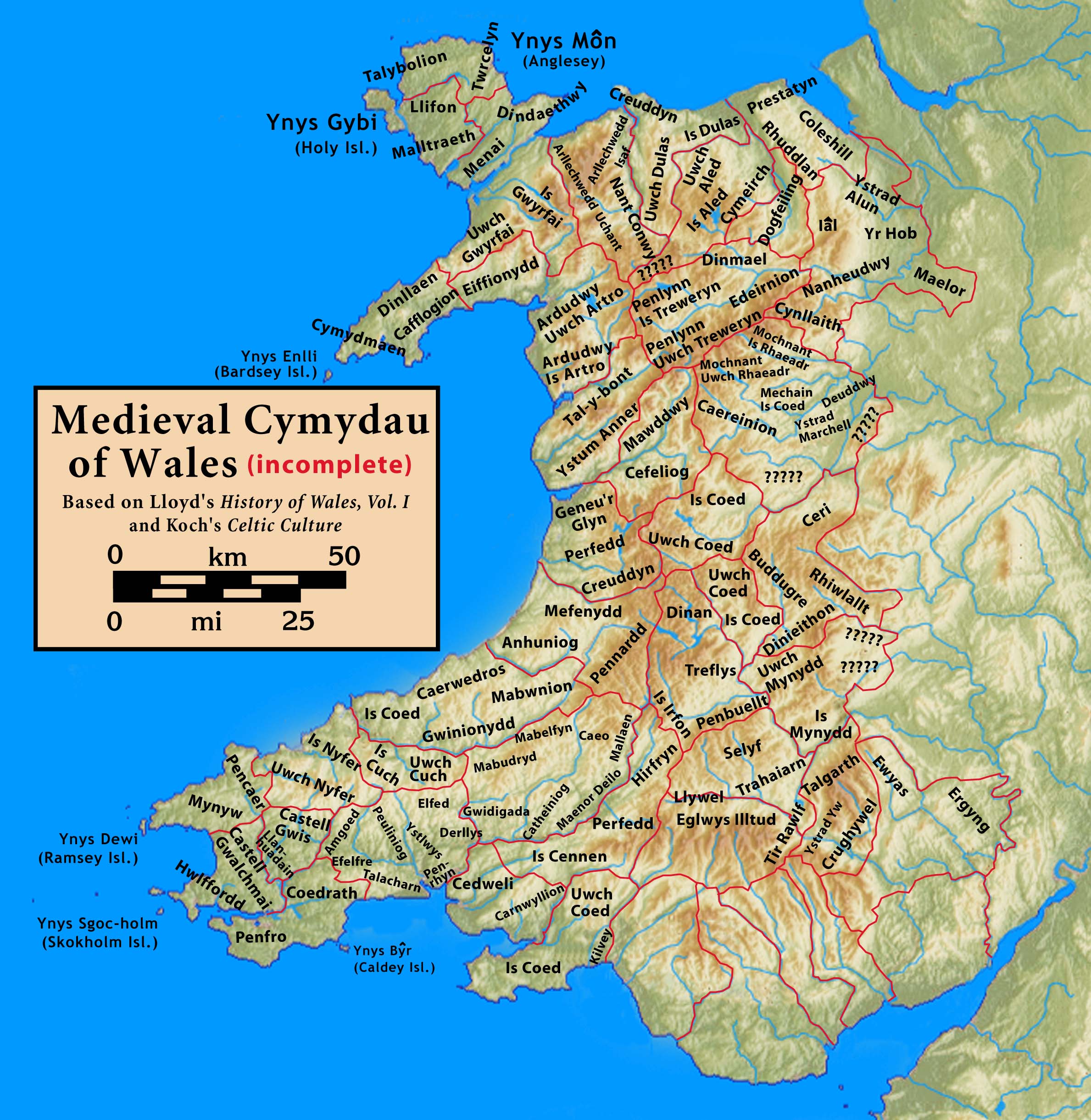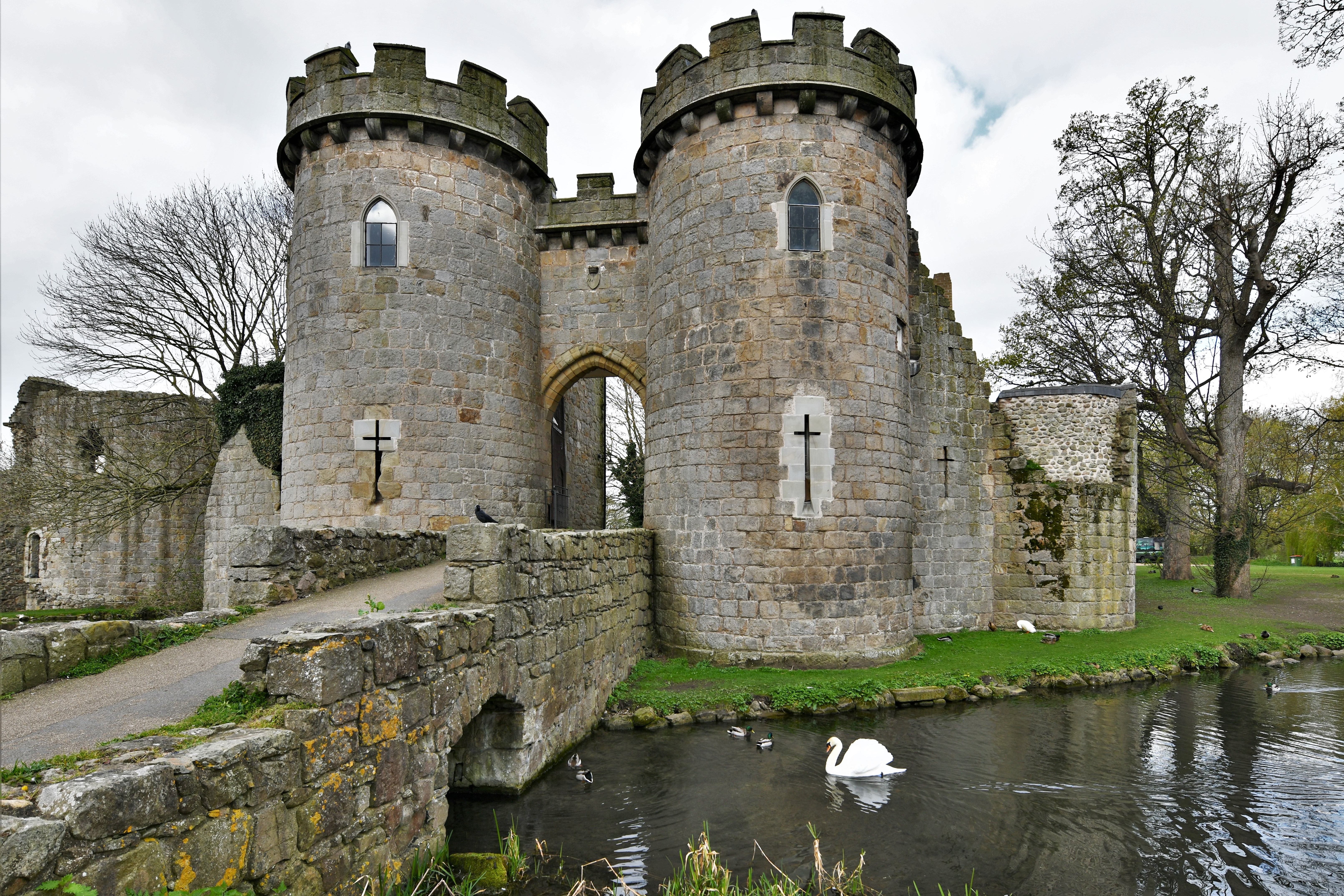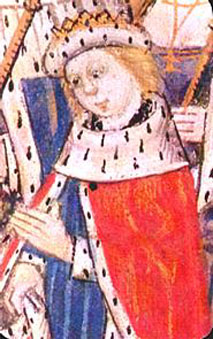|
Iâl
Ial or Yale () was a commote of medieval Wales within the cantref of Maelor in the Kingdom of Powys. When the Kingdom was divided in 1160, Maelor became part of the Princely realm of Powys Fadog (Lower Powys or Madog's Powys), and belonged to the Royal House of Mathrafal. Yale eventually merged with another commote and became the Lordship of Bromfield and Yale, later a royal lordship under the Tudors and Stuarts. History The commote of Iâl, anglicised as Yale, was the stronghold of the Principality of Powys Fadog, and its capital was at Llanarmon-yn-Iâl, in Denbighshire, Wales, in a village situated at a shrine dedicated to the Roman Bishop, Germanus of Auxerre (). The nearby castle, named Tomen y Faerdre, built next to a Neolithic cave, was erected by the first Prince of Wales, Owain Gwynedd, after capturing the commote of Yale from the last Prince of Powys, Madog ap Maredudd. The castle was later rebuilt by King John of England, signatory of Magna Carta an ... [...More Info...] [...Related Items...] OR: [Wikipedia] [Google] [Baidu] |
Llanarmon-yn-Iâl
Llanarmon-yn-Iâl is a village, and local government community, in Denbighshire, Wales, lying in limestone country in the valley of the River Alyn. The community is part of an electoral ward called Llanarmon-yn-Iâl/Llandegla. The population of this ward at the 2011 census was 2,456, the community population being 1062. Location The village sits on the B5431 road, near the junction with the B5430, six miles south of the market town of Mold, at approximate Ordnance Survey map grid reference . The boundaries of Llanarmon-yn-Iâl community include, as well as the main village, the villages of Eryrys and Graianrhyd, along with a number of small hamlets and large areas of farmland. The community lies mostly within the boundaries of the Clwydian Range and Dee Valley Area of Outstanding Natural Beauty. History The village, considered the capital of the commote of Iâl (Yale)—the "hill country"—grew up around a religious community dedicated to a Roman Bishop named St. ... [...More Info...] [...Related Items...] OR: [Wikipedia] [Google] [Baidu] |
Powys Fadog
Powys Fadog (English: ''Lower Powys'' or literally ''Madog's Powys'') was the northern portion of the former princely realm of Powys. The princes of Powys Fadog would build their royal seat at Castell Dinas Brân, and their religious center at Valle Crucis Abbey. Some of its lordships included those of Maelor, Mochnant, Glyndyfrdwy, Yale, and Bromfield and Yale. Following the division of Powys, their cousin branch, the princes of Powys Wenwynwyn, would build Powis Castle. The principality's first prince was Gruffydd Maelor I, and its last sovereign prince was Madog II ap Gruffydd, following the Conquest of Wales by king Edward Longshanks. History Powys Fadog split in two in 1160 following the death of Prince Madog ap Maredudd. He was a member of the Royal House of Mathrafal, founded by grandfather, King Bleddyn ap Cynfyn, who led a defence with the Anglo-Saxons against William the Conqueror.Pierce, T. J., (1959)MADOG ap MAREDUDD (died 1160), king of Powys Dictiona ... [...More Info...] [...Related Items...] OR: [Wikipedia] [Google] [Baidu] |
House Of Mathrafal
The Royal House of Mathrafal, also known as the House of Powys, began as a cadet branch of the Royal House of Dinefwr, taking their name from Mathrafal Castle.The Houses of Cunedda and Rhodri Mawr Welsh Medieval Law: The Laws of Howell the Good (1909) by Hywel ap Cadell, translated by Arthur Wade Wade-Evans. They effectively replaced the List of rulers of Wales#House of Gwertherion, House of Gwertherion, who had been ruling the Kingdom of Powys since end of Roman rule in Britain, late Roman Britain, through the politically advantageous marriage of an ancestor, Merfyn Frych, Merfyn the Oppressor.Lloyd, John Edward (1911) [...More Info...] [...Related Items...] OR: [Wikipedia] [Google] [Baidu] |
Kingdom Of Powys
The Kingdom of Powys (; ) was a Welsh successor state, petty kingdom and principality that emerged during the Middle Ages following the end of Roman rule in Britain. It very roughly covered the northern two-thirds of the modern county of Powys and part of today's English West Midlands (see map). More precisely, and based on the Romano-British tribal lands of the Ordovices in the west and the Cornovii in the east, its boundaries originally extended from the Cambrian Mountains in the west to include the modern West Midlands region of England in the east. The fertile river valleys of the Severn and Tern are found there, and this region is referred to in later Welsh literature as "the Paradise of Powys" (an epithet retained in Welsh for the modern UK county). Name The name Powys is thought to derive from Latin ''pagus'' 'the countryside' and ''pagenses'' 'dwellers in the countryside', also the origins of French "pays" and English "peasant". During the Roman Empire, this regi ... [...More Info...] [...Related Items...] OR: [Wikipedia] [Google] [Baidu] |
Commote
A commote (, sometimes spelt in older documents as , plural , less frequently )'' Geiriadur Prifysgol Cymru'' (University of Wales Dictionary), p. 643 was a secular division of land in Medieval Wales. The word derives from the prefix ("together", "with") and the noun ("home, abode"). The English word "commote" is derived from the Middle Welsh . The basic unit of land was the , a small basic village or settlement. In theory, 100 made up a (literally, "one hundred settlements"; plural: ), and half or a third of a was a , although in practice the actual numbers varied greatly. Together with the , commotes were the geographical divisions through which defence and justice were organised. In charge of a commote would be a chieftain probably related to the ruling Prince of the Kingdom. His court would have been situated in a special , referred to as a . Here, the bonded villagers who farmed the chieftain's estate lived, together with the court officials and servants. Commotes were f ... [...More Info...] [...Related Items...] OR: [Wikipedia] [Google] [Baidu] |
Motte And Bailey Castle
A motte-and-bailey castle is a European fortification with a wooden or stone keep situated on a raised area of ground called a motte, accompanied by a walled courtyard, or bailey, surrounded by a protective ditch and palisade. Relatively easy to build with unskilled labour, but still militarily formidable, these castles were built across northern Europe from the 10th century onwards, spreading from Normandy and Anjou in France, into the Holy Roman Empire, as well as the Low Countries it controlled, in the 11th century, when these castles were popularized in the area that became the Netherlands. The Normans introduced the design into England and Wales. Motte-and-bailey castles were adopted in Scotland, Ireland, and Denmark in the 12th and 13th centuries. By the end of the 13th century, the design was largely superseded by alternative forms of fortification, but the earthworks remain a prominent feature in many countries. Architecture Structures A motte-and-bailey castle was ... [...More Info...] [...Related Items...] OR: [Wikipedia] [Google] [Baidu] |
Maelor
The Maelor is an area of north-east Wales along the border with England. It is now entirely part of Wrexham County Borough. The name ''Maelor'' is an old Welsh word: it can be translated as "land of the prince", from ''mael'' ("prince") and ''llawr'' ("low ground", "region").Owen, Hywel Wynn (2017) ''Place-names of Flintshire'', Univ. of Wales Press, p.115 History The Maelor originated as a cantref of the Kingdom of Powys, focused on the monastic settlement of Bangor-on-Dee and containing the commotes of Maelor, Yale (Iâl), the Alyn Valley (Ystrad Alun) and Hope (Yr Hob). Most of the area fell under control of the Kingdom of Mercia during the eighth century, with Offa's Dyke delineating the new border. By the time of the 1066 Norman conquest of England, its eastern areas were recorded as held by Edwin, Earl of Mercia: they were later granted to the Norman magnate Hugh d'Avranches, Earl of Chester. The lands of the Maelor were only reincorporated in Powys during the reign ... [...More Info...] [...Related Items...] OR: [Wikipedia] [Google] [Baidu] |
Germanus Of Auxerre
Germanus of Auxerre (; ; ; 378 – c. 442–448 AD) was a western Roman clergyman who was bishop of Autissiodorum in Late Antique Gaul. He abandoned a career as a high-ranking government official to devote his formidable energy towards the promotion of the church and the protection of his "flock" in dangerous times, personally confronting, for instance, the barbarian king " Goar". In Britain he is best remembered for his journey to combat Pelagianism in or around 429 AD, and the records of this visit provide valuable information on the state of post-Roman British society. He also played an important part in the establishment and promotion of the Cult of Saint Alban. The saint was said to have revealed the story of his martyrdom to Germanus in a dream or holy vision, and Germanus ordered this to be written down for public display. Germanus is venerated as a saint in both the Roman Catholic and Orthodox churches, which commemorate him on 31 July. The principal source for th ... [...More Info...] [...Related Items...] OR: [Wikipedia] [Google] [Baidu] |
Madog Ap Maredudd
Madog ap Maredudd (, ; died 1160) was the last prince of the entire Kingdom of Powys, Wales. He held for a time, the FitzAlan Lordship of Oswestry, family of the Earl of Arundel, Earls of Arundel, of Arundel Castle. His daughter married Lord Rhys, prince of Wales. Early life Madog was the son of King Maredudd ap Bleddyn and grandson of King Bleddyn ap Cynfyn. He followed his father on the throne of Powys in 1132. He is recorded as taking part in the Battle of Lincoln (1141), Battle of Lincoln in 1141 in support of Ranulf de Gernon, 4th Earl of Chester, along with Owain Gwynedd's brother Cadwaladr ap Gruffydd and a large army of Welshmen. In 1149 he is recorded giving the commote of Cyfeiliog to his nephews Owain Cyfeiliog and Meurig. The same year Madog was able to rebuild Oswestry Castle, a fortress of William Fitzalan (rebel), William Fitzalan. It would seem likely that he had gained both the fortresses of Oswestry and Whittington Castle, Whittington in 1146 of Fitzalan, the ... [...More Info...] [...Related Items...] OR: [Wikipedia] [Google] [Baidu] |
Print (BM 1878,0511
Print or printing may also refer to: Publishing * Canvas print, the result of an image printed onto canvas which is often stretched, or gallery-wrapped, onto a frame and displayed *Offset printing, the inked image is transferred from a plate to a rubber blanket and then to the printing surface. *Old master print, a work of art produced by a printing process in the Western tradition * Photographic printing, the process producing a final image on paper * Edition (book)#Print run, Print run, all of the copies produced by a single set-up of the production equipment * Printing is the process for reproducing text and images using a master form or template * Printing press, a device for applying pressure to an inked surface resting upon a print medium * Printmaking, the process of making artwork by printing, normally on paper * Release print, a copy of a film that is provided to a movie theater * Textile printing, the process of applying color to fabric in patterns or designs * Waterle ... [...More Info...] [...Related Items...] OR: [Wikipedia] [Google] [Baidu] |
Prince Of Wales
Prince of Wales (, ; ) is a title traditionally given to the male heir apparent to the History of the English monarchy, English, and later, the British throne. The title originated with the Welsh rulers of Kingdom of Gwynedd, Gwynedd who, from the late 12th century, used it (albeit inconsistently) to assert their supremacy over the other Welsh rulers. However, to mark the finalisation of his conquest of Wales, in 1301, Edward I of England invested his son Edward of Caernarfon with the title, thereby beginning the tradition of giving the title to the heir apparent when he was the monarch's son or grandson. The title was later claimed by the leader of a Welsh Revolt, Welsh rebellion, Owain Glyndŵr, from 1400 until 1415. King Charles III created his son William, Prince of Wales, William Prince of Wales on 9 September 2022, the day after his accession to the throne, with formal letters patent issued on 13 February 2023. The title has become a point of controversy in Wales. Welsh ... [...More Info...] [...Related Items...] OR: [Wikipedia] [Google] [Baidu] |
Cave
Caves or caverns are natural voids under the Earth's Planetary surface, surface. Caves often form by the weathering of rock and often extend deep underground. Exogene caves are smaller openings that extend a relatively short distance underground (such as rock shelters). Caves which extend further underground than the opening is wide are called endogene caves. Speleology is the science of exploration and study of all aspects of caves and the cave environment. Visiting or exploring caves for recreation may be called Caving, ''caving'', ''potholing'', or ''spelunking''. Formation types The formation and development of caves is known as ''speleogenesis''; it can occur over the course of millions of years. Caves can range widely in size, and are formed by various geological processes. These may involve a combination of chemical processes, erosion by water, tectonic forces, microorganisms, pressure, and atmospheric influences. Isotopic dating techniques can be applied to cave sedime ... [...More Info...] [...Related Items...] OR: [Wikipedia] [Google] [Baidu] |






